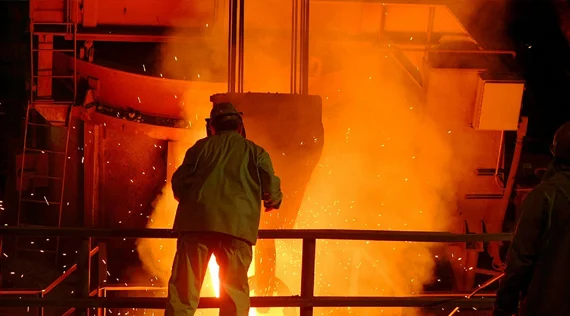SEASI: Steel demand registered double-digit growth in 2016
Steel News | 2017-03-22 23:51:29
Vietnam registered the highest steel consumption growth rate among ASEAN region countries during 2016.
BEIJING (Scrap Monster): The preliminary data collected by the South East Asia Iron and Steel Institute (SEAISI) suggests double-digit growth to ASEAN steel demand in 2016. The steel demand by the region soared 12.8% over the previous year to total around 78 million tonnes during the year. Except Singapore, all countries recorded strong growth in apparent steel consumption.
Vietnam registered the highest steel consumption growth rate among ASEAN region countries during 2016. The country’s steel demand growth exceeded 20% to total around 22 million tonnes. Domestic steel production too surged higher significantly by nearly 20% year-on-year to total over 8 million tonnes. Imports edged higher from 13.5 million in 2015 to 17 million tonne sin 2016, whereas exports skyrocketed by 35% from 2.8 million in 2015 to 3.8 million in 2016.
According to the Institute, Indonesia’s steel demand totaled around 12 million tonnes, rising sharply by 10% over the previous year. The country’s steel production too climbed higher by nearly 6%. Import volumes rebounded to 7 million tonnes, after recording two straight years of decline. On the other hand, Indonesia’s steel export volumes plunged during the year.
The Malaysian steel demand is estimated to have grown significantly to touch 11 million tonnes in 2016. However, steel production by the country extended decline to total below 4 million tonnes. Steel import volumes totaled around 8.4 million tonnes, growing by nearly 12% from 2015. Malaysia’s steel export volumes have dropped sharply by 26% year-on-year.
The steel demand in Philippines continued to grow in 2016. However, the growth rate reduced from 20% in 2015 to 11% in 2016. The country recorded rise in production and import volumes.
The decline in construction sector demand resulted in drop in steel demand in Singapore. The country’s steel demand has reduced by almost one-fourth during the year to drop below 3 million tonnes. Meantime, domestic steel production increased modestly by 4.5% over the previous year. The drop in demand impacted the import volumes. Singapore’s steel import volumes plunged by more than a million tonnes.
The apparent steel consumption by Thailand totaled 19 million tonnes, registering 15% growth over 2015. The huge rise in demand led to ramped up production and imports. Thailand’s steel production totaled nearly 8 million tonnes, significantly higher by 23% over the previous year. The imports too surged by nearly 10% to touch 12 million tonnes. The sharp increase in steel prices resulted in stocking up of steel by traders and producers, which in turn contributed to the high growth rate.
The global steel industry managed to stage a turnaround in 2016, mainly on the back of recovery in steel prices. The figures released by the World Steel Association indicate that global crude steel production increased marginally by 0.8% from 1,615.4 million tonnes to 1,628.5 million tonnes in 2016.
Going forward, stability of steel prices may play a crucial role in steel production volumes by major countries, a lot of which depends upon raw material prices and success of China’s planned production capacity cuts. Meantime, the International Monetary Fund (IMF) has revised upward its global economic growth projections for the current year, mainly on account of improvements in emerging market and developing economies and projected strong economic growth in the US, Europe and Japan. The ASEAN’s region’s economy is expected to grow at 4.9% in 2017. The economy had grown by 4.8% during the previous year.
 By
By 